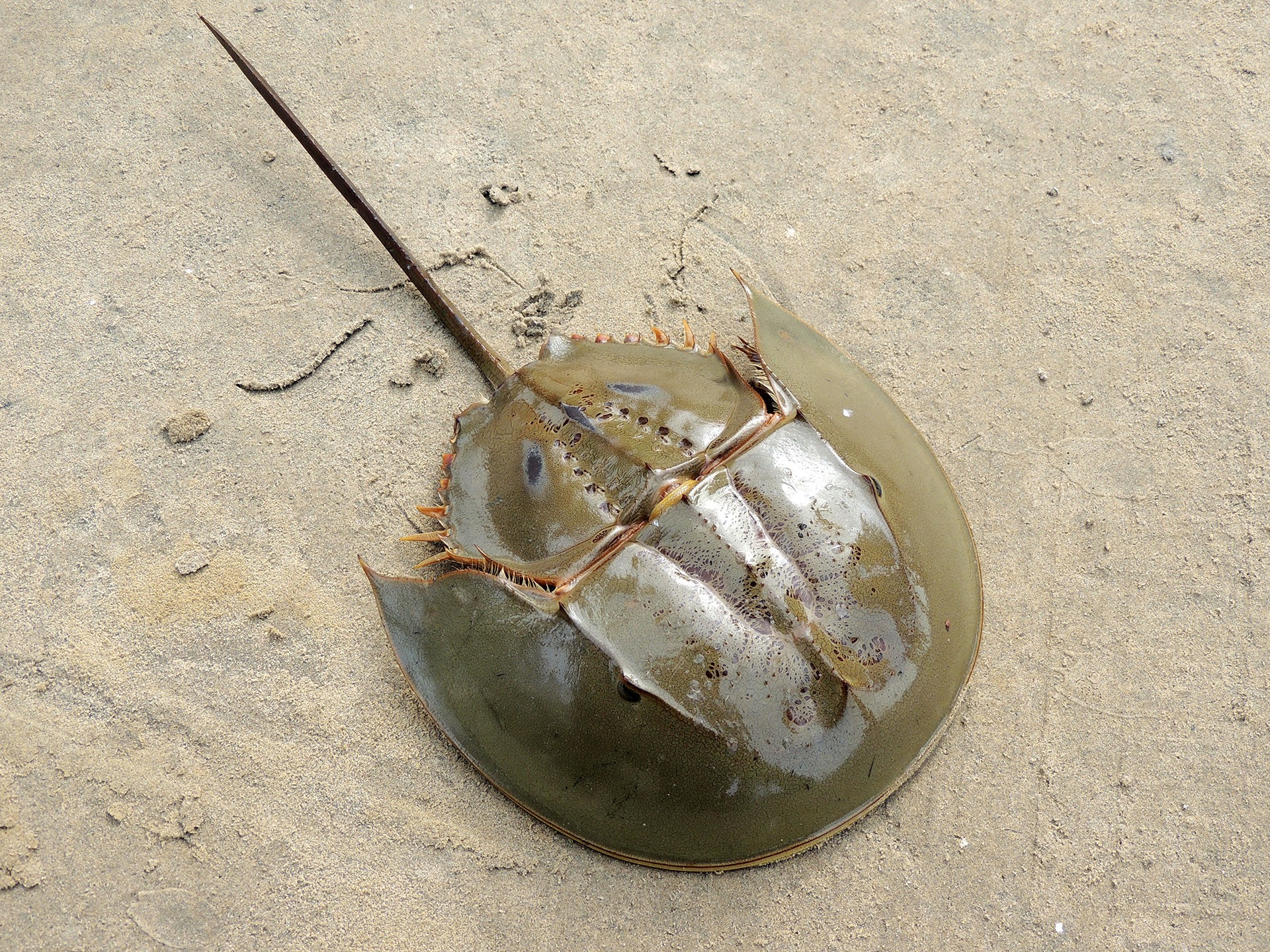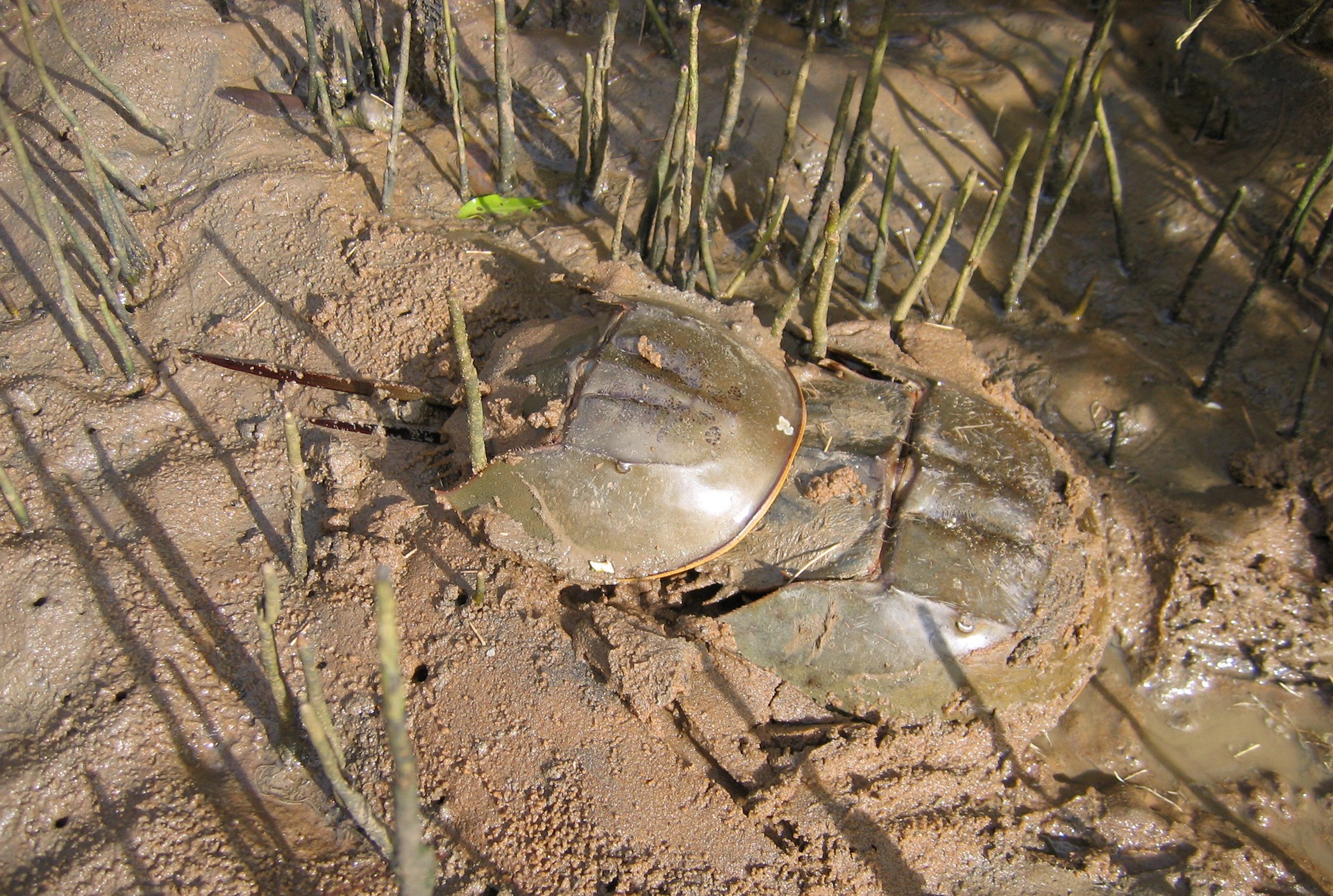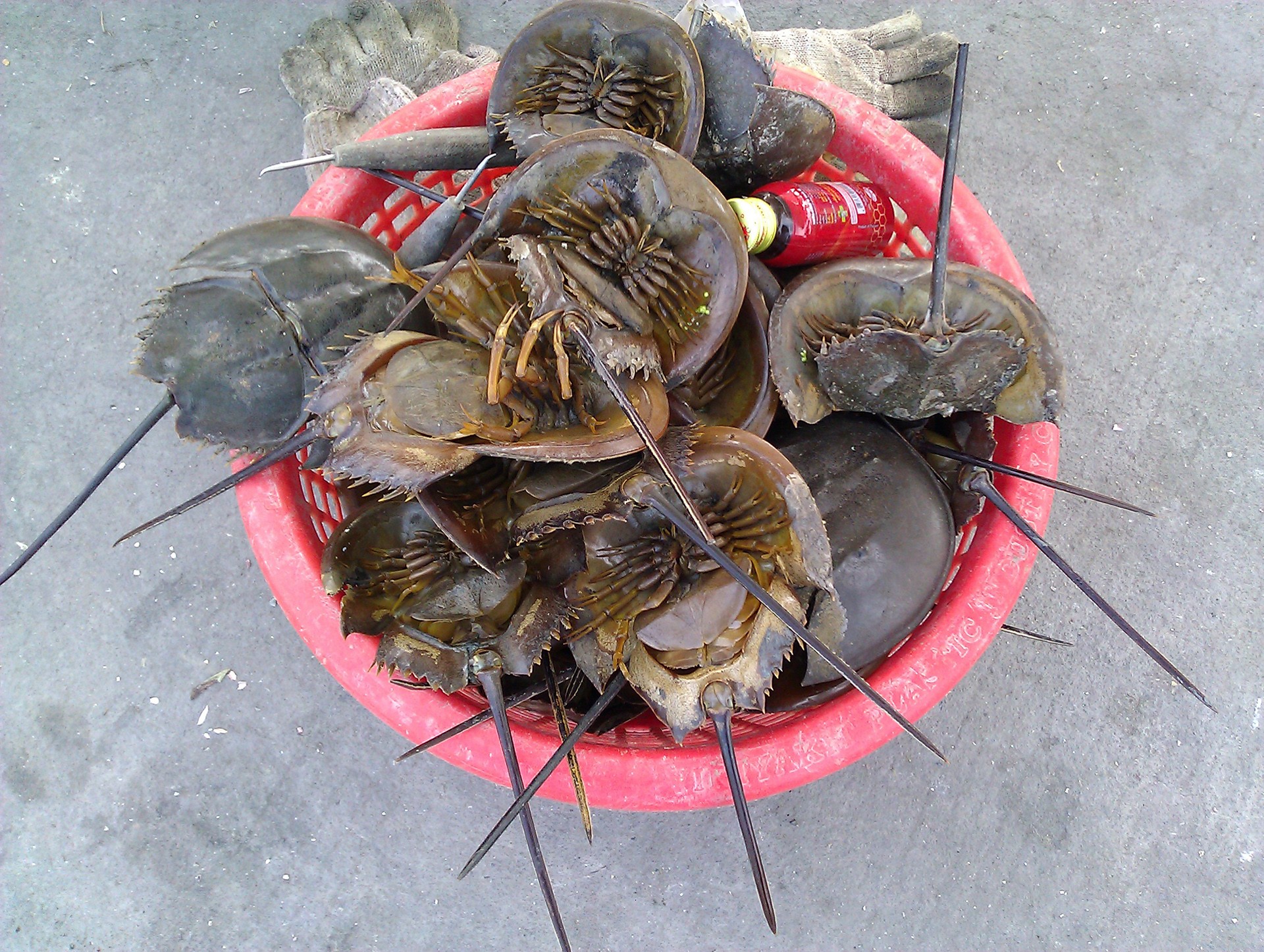Endangered Species Day fell on May 19 this year. To call attention to the wildlife we’re most in danger of losing, Nature inFocus has launched a multi-part series on endangered species across India. We’ve chosen to focus on each species individually, by asking a researcher who’s been most involved in the fight for their survival to write about them. These aren’t intended to be solely dire missives either – if there’s good news, or a small milestone that’s been achieved in the field, we want to highlight it. If their numbers are inching up with the help of conservationists, researchers, policy makers and nature itself, we want to celebrate this. Here is the second story of the series.
The Horseshoe Crab is a living fossil. The Horseshoe Crab hails from the pre-Cambrian era. Often called the King Crab, it has reigned the ocean for 360 million years. In fact, it isn’t actually a true crab, but a relative of the scorpion. Of the four extant species of Horseshoe Crabs, two are found in India - Tachypleus gigas and Carcinoscorprius rotundicauda. Because of its peculiar shape, the Horseshoe Crab is known by different names: RamaLakhania, Lakhanpatia, Kantia, Samudrabicha and Kankadabicha.
It is found along the upper east coast of India. Both species have a limited distribution, and are found in the mangrove swamps and muddy shores of the Sunderbans to Coringa. Outside of India, their distribution ranges from Myanmar to the Phillipines. Both are endangered, and are listed in the “Data Deficient” (DD) category as per the IUCN (World Conservation Union) Red List of Threatened Animals, as there is not enough information available on their population status. They have also been listed under Schedule IV of the Wildlife Protection Act, 1972.
Horseshoe Crab populations have dwindled drastically. Since the 1990s, habitat destruction and changes in fishing practices have drastically impacted these species. The change from indigenous practices such as fishing by country boats using monofilament nets, to mechanised fishing by outboard and trawler boats which dredge the seafloor using multifilament nets has had a devastating impact on Horseshoe Crab habitat, and has also resulted in increased bycatch-related mortality. Injured and discarded Horseshoe Crabs on the shore are also at risk of predation by feral dogs and other wild animals such as jackals and hyenas.
Coastal communities have also contributed to their decline. Generally speaking, Horseshoe Crabs are not over-harvested for food, although the Nolia community in southern Odisha will occasionally eat Horseshoe Crab meat. Apart from this, the telson, or the sharp sword-like tail of the Horseshoe Crab is sought after as a cure for rheumatic diseases, particularly by women along the northern Odisha coast and West Bengal.
The situation for Horseshoe Crabs is indeed gloomy. According to the latest data by the Zoological Survey of India, there are only around 300 T.gigas and around 1,200 C.rotundicauda in the entire Sunderban mangroves of West Bengal; along the Chandipur-Balaramgari coast of Odisha, it is estimated that there are around 3,500 T.gigas and around 200 C.rotundicauda. This suggests that there has been a reduction in their numbers in recent years.
Unless we protect them, and their habitat, they will vanish in the near future. We urgently need to create awareness about their conservation among people, especially the fishing community, as their fishing practices in the intertidal regions directly impact Horseshoe Crab populations. Perhaps, incentives to drive the rescue and release of Horseshoe Crabs caught in fishing nets could be considered as an option. Another possible solution is to promote the sea ranching of Horseshoe Crabs.
We need policy level intervention to stop further habitat destruction. Several community/conservation reserves have already been declared by the government, as per the Wildlife (Protection) Act, 1972, however, more areas need to be demarcated. ZSI has identified 16 sites along the West Bengal and Odisha coast as potential Horseshoe Crab habitats in need of protection, and has suggested that they be declared as reserves too, managed in collaboration with local fishermen communities. The report is currently with the National Centre for Sustainable Coastal Management (NCSCM), Chennai, and is yet to be submitted to the Ministry of Environment, Forests and Climate Change.
To read more stories from the Endangered Species Series, click here.



